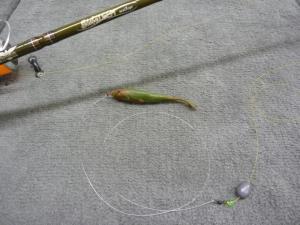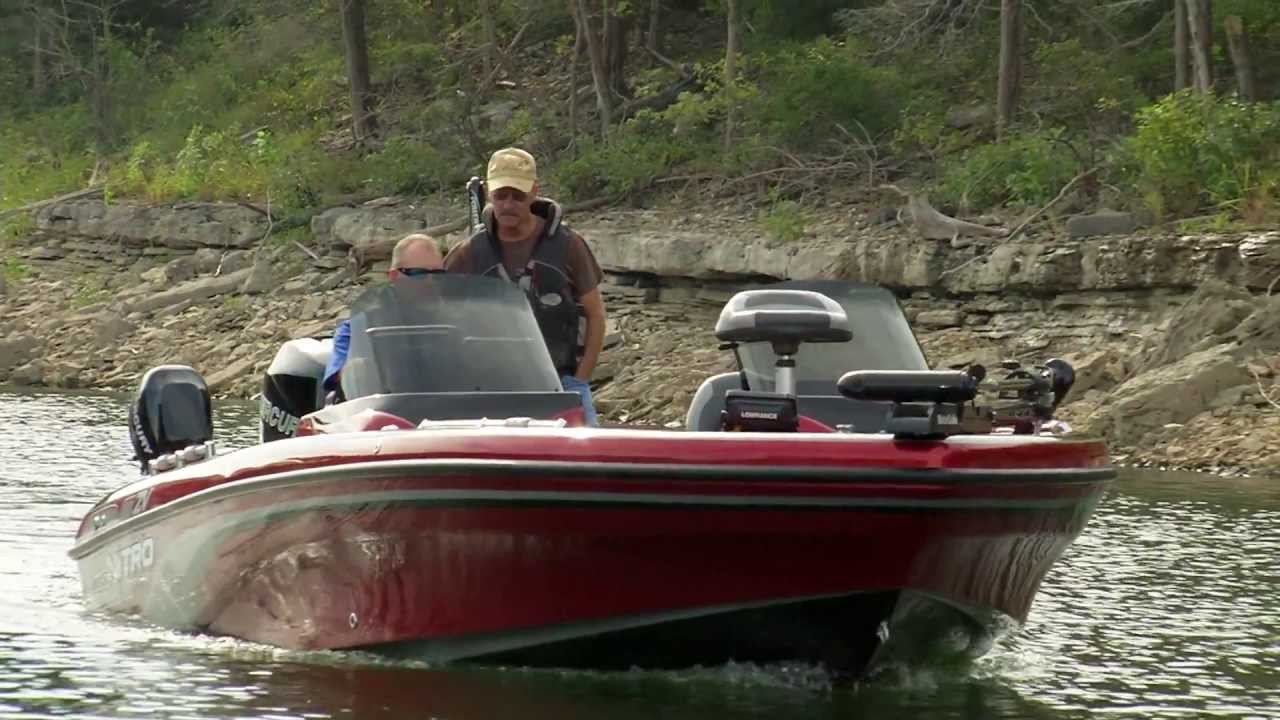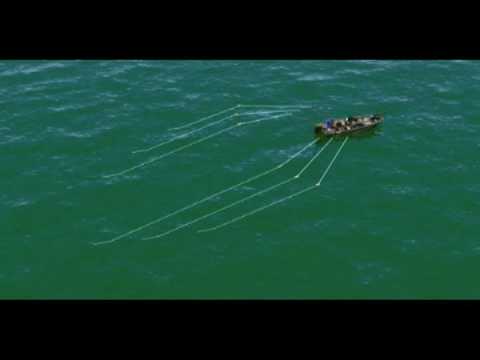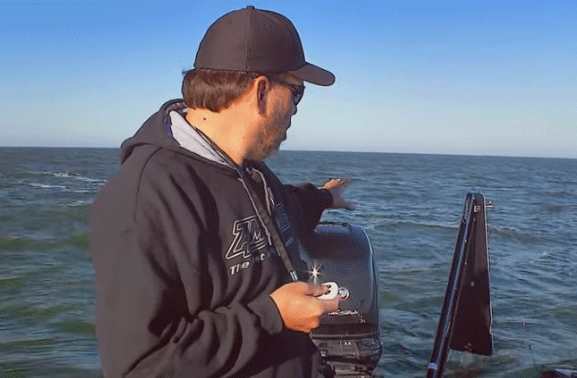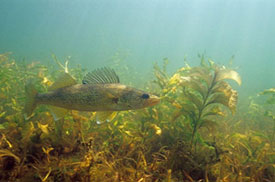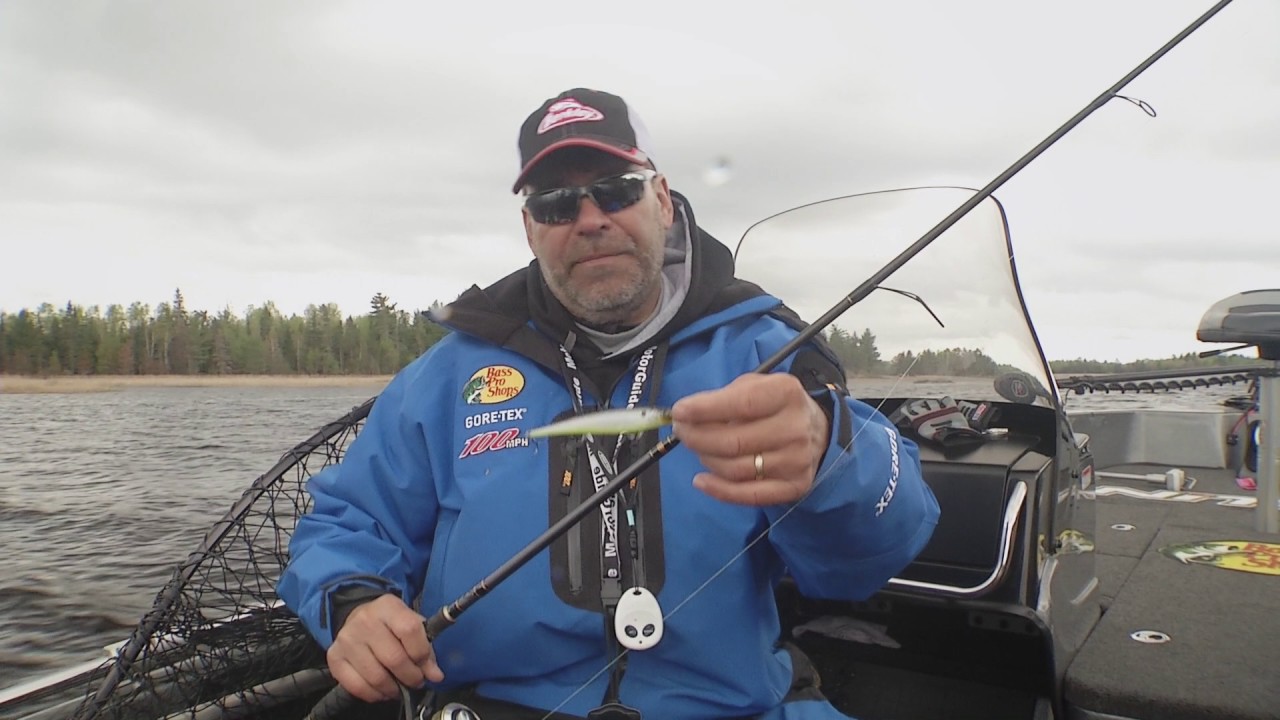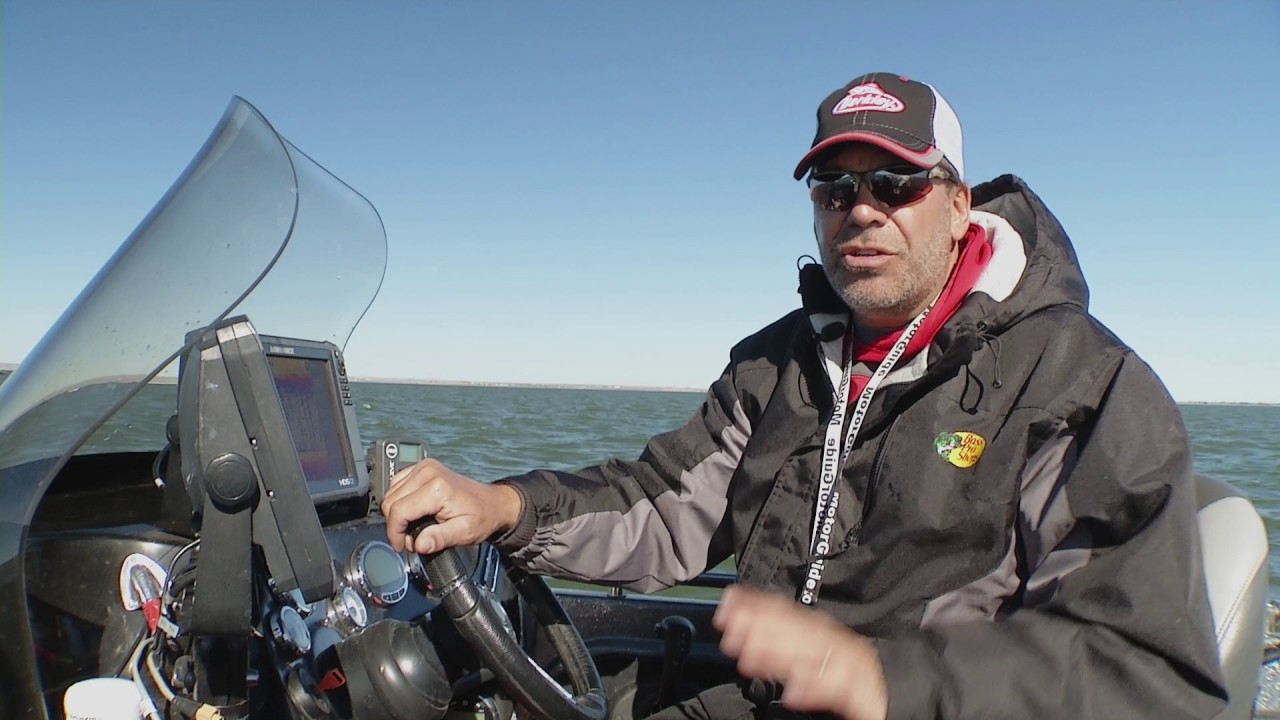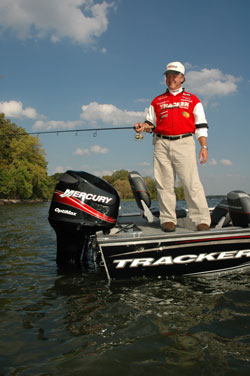
Working a jigging spoon is a dynamite tactic on lakes and reservoirs when walleyes are actively feeding on structure, especially if there’s cover present like rocks, sparse weeds or a combination of the two. This could be in water as shallow as 5 feet or possibly as deep as 15 to 20 feet depending on the season and the particular body of water. From early summer right through the fall, this is a technique you really want to have available in your arsenal of walleye fishing tactics.
Total Solutions Technique
My best technique for working a jigging spoon is to snap the spoon off the bottom by moving the rod tip three feet, from the 9 o’clock position to the 12 o’clock overhead position. Then, keep the line tight by simultaneously reeling and lowering the rod (picking up slack). I call it following the line down as the spoon drops. Many walleyes hit as soon as the spoon settles to the bottom on the cast or is almost on the bottom. Be ready! You must be able to feel when they “thunk” it.
Once on the bottom, wait a couple seconds (like a jig) then repeat the hop—reel down—follow the line, and again, be ready for the strike. Don’t over jerk the spoon. With the rod tip moving from 9 to 12, the spoon will jump about 2 to 3 feet off bottom. That’s adequate. If you haven’t spooned yet, start with a half ounce spoon, and if walleyes hit it, great. If not, move down to a quarter ounce spoon. When it’s windy, stay with a heavier spoon. Like most tactics, this requires practice. It also produces walleyes that you might not catch with your regular methods.
Total Solutions Equipment
Like with all walleye fishing techniques, the right equipment is key. A great set-up would be a 7 foot, high-modulus graphite, medium action spinning rod and a quality reel spooled with 10 pound test Berkley Trilene XT. Like I mentioned earlier, the line plays a critical role in spooning. After trying them all, I have settled on 10-pound Trilene XT because it’s abrasion resistant, has excellent knot strength and has just the right “stiffness” for this tactic … important because you need to have a sturdy line when casting spoons. A line that is too “limp” causes a sling-shot effect when popping a spoon and results in a delay due to line stretch.
 Berkley® Trilene XT® |

